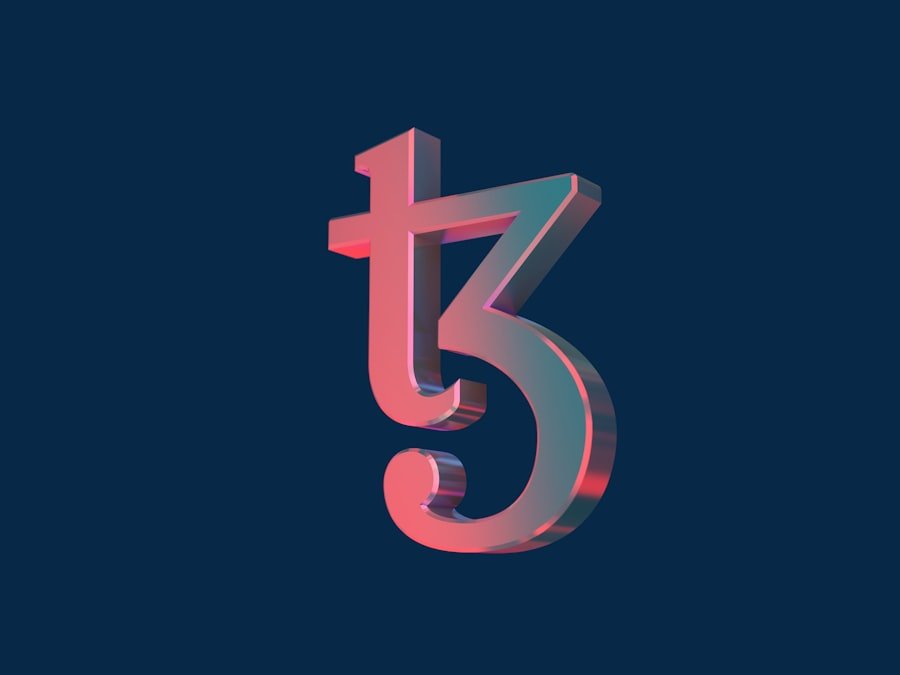Distributed Ledger Technology (DLT) represents a significant evolution in the way data is stored, shared, and managed across various sectors. At its core, DLT is a digital system for recording transactions in multiple places simultaneously, ensuring that all participants in a network have access to the same information in real-time. This decentralised approach eliminates the need for a central authority, thereby enhancing transparency and security.
The rise of DLT has been propelled by the increasing demand for more efficient, secure, and transparent systems in an era where data breaches and fraud are prevalent. The concept of DLT is often associated with cryptocurrencies, particularly Bitcoin, which was the first practical application of this technology. However, its implications extend far beyond digital currencies.
Industries such as finance, supply chain management, healthcare, and even government services are exploring how DLT can transform their operations. By enabling a shared and immutable record of transactions, DLT has the potential to streamline processes, reduce costs, and foster trust among participants. As organisations begin to recognise the benefits of this technology, the landscape of traditional business practices is poised for disruption.
Summary
- Distributed Ledger Technology (DLT) is a digital system for recording transactions across multiple locations in a secure and transparent manner.
- DLT works by using a network of computers to validate and record transactions, creating a tamper-proof and decentralised record of data.
- The advantages of DLT include increased security, reduced costs, improved transparency, and enhanced efficiency in transaction processing.
- Potential applications of DLT include supply chain management, healthcare records, voting systems, and digital identity verification.
- Blockchain, a type of DLT, plays a crucial role in ensuring the security and integrity of transactions by creating a chain of blocks that are linked and encrypted.
How Distributed Ledger Technology Works
At the heart of DLT lies a network of nodes that collectively maintain a shared database. Each node in the network holds a copy of the entire ledger, which is updated in real-time as transactions occur. When a transaction is initiated, it is broadcast to all nodes in the network.
Each node then validates the transaction using a consensus mechanism, which ensures that all copies of the ledger remain synchronised and accurate. This process can vary depending on the specific type of DLT being used; for instance, some systems employ proof-of-work or proof-of-stake mechanisms to achieve consensus. Once validated, the transaction is added to a block along with other transactions.
This block is then linked to previous blocks, forming a chain that is cryptographically secured. The immutability of this chain is one of the key features of DLT; once a block is added to the ledger, it cannot be altered or deleted without the consensus of the network. This characteristic not only enhances security but also provides an auditable trail of all transactions, which can be invaluable for regulatory compliance and dispute resolution.
The Advantages of Distributed Ledger Technology

One of the most significant advantages of DLT is its ability to enhance transparency. Since all participants in a network have access to the same information, there is a reduced risk of discrepancies or fraudulent activities. This transparency fosters trust among parties who may not have previously had a reason to trust one another.
For example, in supply chain management, stakeholders can track products from origin to destination, ensuring that all claims about sourcing and handling are verifiable. Another notable benefit is the increased efficiency that DLT can bring to various processes. Traditional systems often involve multiple intermediaries that can slow down transactions and increase costs.
By eliminating these intermediaries, DLT can streamline operations and reduce transaction times significantly. In financial services, for instance, cross-border payments that typically take several days can be completed in minutes using DLT. This efficiency not only saves time but also reduces operational costs for businesses.
The Potential Applications of Distributed Ledger Technology
The potential applications of DLT are vast and varied, spanning numerous industries. In finance, DLT can facilitate faster and more secure transactions while reducing costs associated with traditional banking systems. For instance, central banks are exploring Central Bank Digital Currencies (CBDCs) that leverage DLT to provide a more efficient means of conducting monetary policy and improving payment systems.
In supply chain management, DLT can enhance traceability and accountability. Companies can use DLT to track products through every stage of production and distribution, ensuring that they meet quality standards and ethical sourcing requirements. For example, companies like Walmart have implemented blockchain solutions to trace food products from farm to store shelves, allowing for rapid response in case of contamination or recalls.
Healthcare is another sector ripe for transformation through DLT. Patient records can be securely stored on a distributed ledger, giving healthcare providers access to accurate and up-to-date information while maintaining patient privacy. This could lead to improved patient outcomes as healthcare professionals can make informed decisions based on comprehensive medical histories.
The Role of Blockchain in Distributed Ledger Technology
Blockchain technology is perhaps the most well-known form of DLT and serves as a foundational element for many applications within this domain. A blockchain consists of a series of blocks that contain transaction data, each linked to the previous block through cryptographic hashes. This structure not only ensures data integrity but also provides a chronological record of all transactions.
The decentralised nature of blockchain means that no single entity has control over the entire network, which mitigates risks associated with centralised systems such as data breaches or manipulation. Furthermore, blockchain’s consensus mechanisms ensure that all participants agree on the validity of transactions before they are added to the ledger. This feature is particularly important in environments where trust is paramount.
While blockchain is a powerful tool within the realm of DLT, it is essential to note that not all distributed ledgers are blockchains. Some DLT implementations may use different structures or consensus algorithms tailored to specific use cases. Nevertheless, blockchain remains a prominent example due to its pioneering role in popularising DLT and its ongoing development across various sectors.
The Challenges and Limitations of Distributed Ledger Technology

Despite its numerous advantages, DLT faces several challenges and limitations that must be addressed for widespread adoption. One significant concern is scalability; as more transactions are added to a distributed ledger, maintaining performance can become increasingly difficult. For instance, Bitcoin’s blockchain has faced criticism for its limited transaction throughput compared to traditional payment systems like Visa.
Solutions such as sharding or layer-two protocols are being explored to enhance scalability without compromising security. Another challenge lies in regulatory uncertainty. As governments and regulatory bodies grapple with how to classify and govern DLT applications, businesses may face hurdles in compliance and legal frameworks.
The lack of standardisation across different jurisdictions can create confusion and hinder innovation. For example, while some countries have embraced cryptocurrencies and blockchain technology, others have imposed strict regulations or outright bans. Moreover, security remains a critical concern.
While DLT offers enhanced security features compared to traditional systems, vulnerabilities still exist. Smart contracts—self-executing contracts with the terms directly written into code—can be susceptible to bugs or exploits if not properly audited. High-profile hacks and breaches have raised questions about the overall security of DLT systems, necessitating ongoing efforts to improve resilience against cyber threats.
The Future of Distributed Ledger Technology
The future of DLT appears promising as more industries recognise its potential to revolutionise traditional practices. As technology continues to evolve, we can expect advancements that address current limitations while expanding its applicability across various sectors. For instance, improvements in consensus algorithms may lead to faster transaction speeds and greater energy efficiency, making DLT more viable for large-scale applications.
Furthermore, as regulatory frameworks become clearer and more standardised globally, businesses will likely feel more confident in adopting DLT solutions. This regulatory clarity could pave the way for innovative financial products and services that leverage DLT’s capabilities while ensuring compliance with legal requirements. Collaboration between industries will also play a crucial role in shaping the future of DLT.
Partnerships between technology providers, financial institutions, and regulatory bodies can foster an environment conducive to innovation while addressing concerns related to security and compliance. Initiatives such as industry consortia focused on developing shared standards for DLT applications may emerge as key drivers for widespread adoption.
Conclusion and Implications for Businesses and Industries
The implications of Distributed Ledger Technology for businesses and industries are profound and far-reaching. As organisations begin to explore its potential benefits—ranging from enhanced transparency and efficiency to improved security—those that embrace this technology may gain a competitive edge in their respective markets. The ability to streamline operations while fostering trust among stakeholders positions businesses well for success in an increasingly digital economy.
However, it is essential for organisations to approach DLT with a clear understanding of its challenges and limitations. By investing in research and development while collaborating with industry peers and regulators, businesses can navigate the complexities associated with implementing DLT solutions effectively. As this technology continues to mature, it will undoubtedly reshape how industries operate, paving the way for innovative practices that were once thought impossible.
Distributed Ledger Technology (DLT) has revolutionised the way transactions are recorded and verified. This innovative technology has numerous benefits, including increased security, transparency, and efficiency. In a related article on accountants, it discusses how professionals in the finance and accounting sector can leverage DLT to streamline their processes and enhance data integrity. By utilising DLT, accountants can ensure accurate and tamper-proof financial records, ultimately improving trust and reliability in the industry.
FAQs
What is Distributed Ledger Technology (DLT)?
Distributed Ledger Technology (DLT) is a digital system for recording the transaction of assets in multiple places at the same time. It is a decentralized and distributed database that maintains a continuously growing list of records, called blocks, which are linked and secured using cryptography.
How does Distributed Ledger Technology work?
DLT works by allowing multiple participants to have simultaneous access to a digital ledger, which is updated in real-time. Each participant has a copy of the ledger and can independently verify and record transactions, creating a transparent and tamper-proof record of all transactions.
What are the key features of Distributed Ledger Technology?
Key features of DLT include decentralization, transparency, immutability, and security. Decentralization means that there is no central authority controlling the ledger, transparency ensures that all participants can view the same information, immutability guarantees that once a transaction is recorded, it cannot be altered, and security is provided through cryptographic techniques.
What are the potential applications of Distributed Ledger Technology?
DLT has potential applications in various industries, including finance, supply chain management, healthcare, and government. It can be used for secure and transparent financial transactions, tracking and verifying the origin of goods, managing patient records, and ensuring the integrity of government records.
What are the different types of Distributed Ledger Technology?
The two main types of DLT are blockchain and directed acyclic graph (DAG). Blockchain is a linear chain of blocks, while DAG is a more complex structure that allows for multiple transactions to be processed simultaneously. Both types have their own advantages and are used in different applications.
